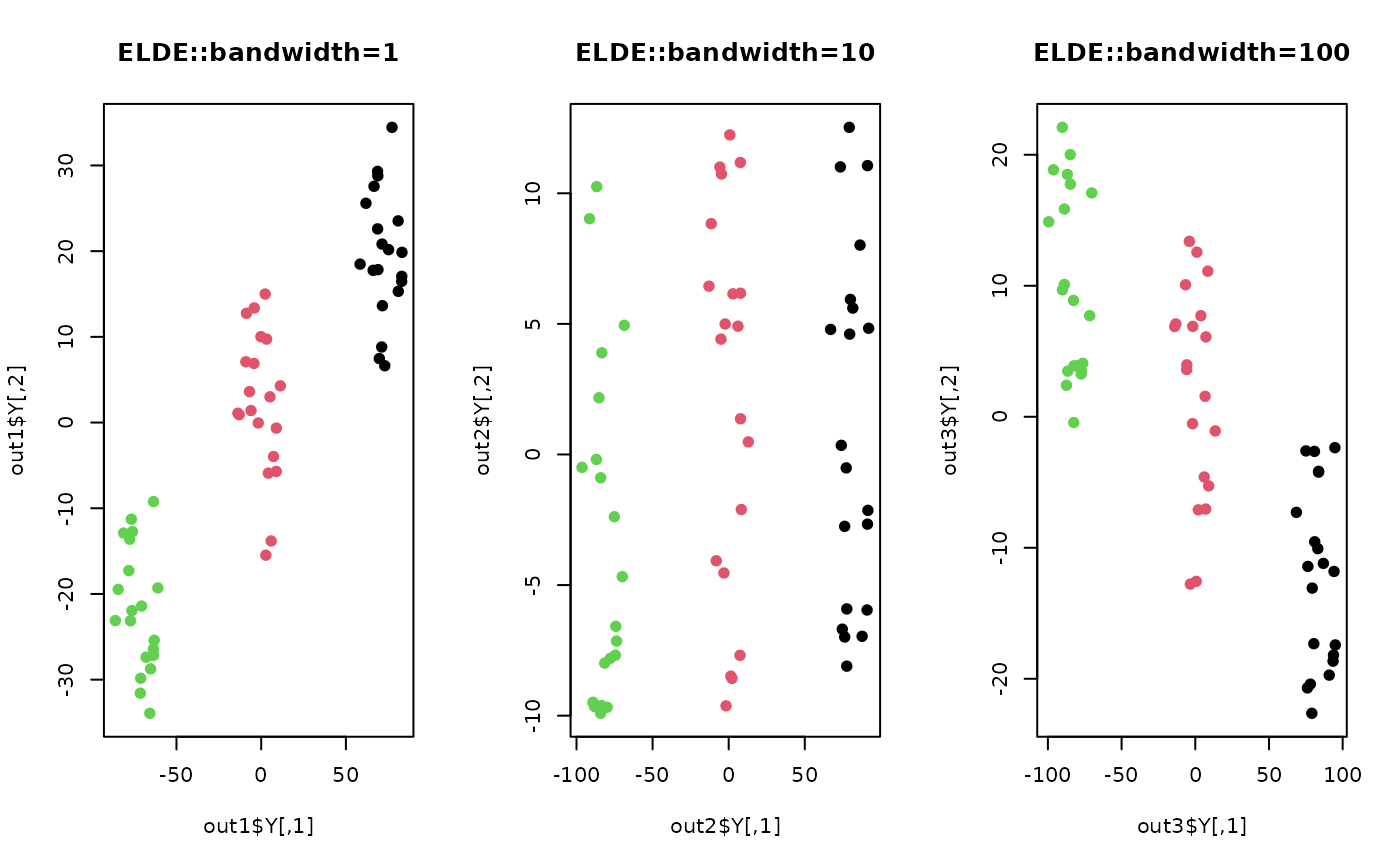Local Discriminant Embedding (LDE) suffers from a small-sample-size problem where scatter matrix may suffer from rank deficiency. Exponential LDE (ELDE) provides not only a remedy for the problem using matrix exponential, but also a flexible framework to transform original data into a new space via distance diffusion mapping similar to kernel-based nonlinear mapping.
Arguments
- X
an \((n\times p)\) matrix or data frame whose rows are observations.
- label
a length-\(n\) vector of data class labels.
- ndim
an integer-valued target dimension.
- t
kernel bandwidth in \((0,\infty)\).
- preprocess
an additional option for preprocessing the data. Default is "center". See also
aux.preprocessfor more details.- k1
the number of same-class neighboring points (homogeneous neighbors).
- k2
the number of different-class neighboring points (heterogeneous neighbors).
Value
a named list containing
- Y
an \((n\times ndim)\) matrix whose rows are embedded observations.
- trfinfo
a list containing information for out-of-sample prediction.
- projection
a \((p\times ndim)\) whose columns are basis for projection.
References
Dornaika F, Bosaghzadeh A (2013). “Exponential Local Discriminant Embedding and Its Application to Face Recognition.” IEEE Transactions on Cybernetics, 43(3), 921--934.
See also
Examples
## generate data of 3 types with difference
set.seed(100)
dt1 = aux.gensamples(n=20)-50
dt2 = aux.gensamples(n=20)
dt3 = aux.gensamples(n=20)+50
## merge the data and create a label correspondingly
X = rbind(dt1,dt2,dt3)
label = rep(1:3, each=20)
## try different kernel bandwidth
out1 = do.elde(X, label, t=1)
out2 = do.elde(X, label, t=10)
out3 = do.elde(X, label, t=100)
## visualize
opar <- par(no.readonly=TRUE)
par(mfrow=c(1,3))
plot(out1$Y, pch=19, col=label, main="ELDE::bandwidth=1")
plot(out2$Y, pch=19, col=label, main="ELDE::bandwidth=10")
plot(out3$Y, pch=19, col=label, main="ELDE::bandwidth=100")
 par(opar)
par(opar)